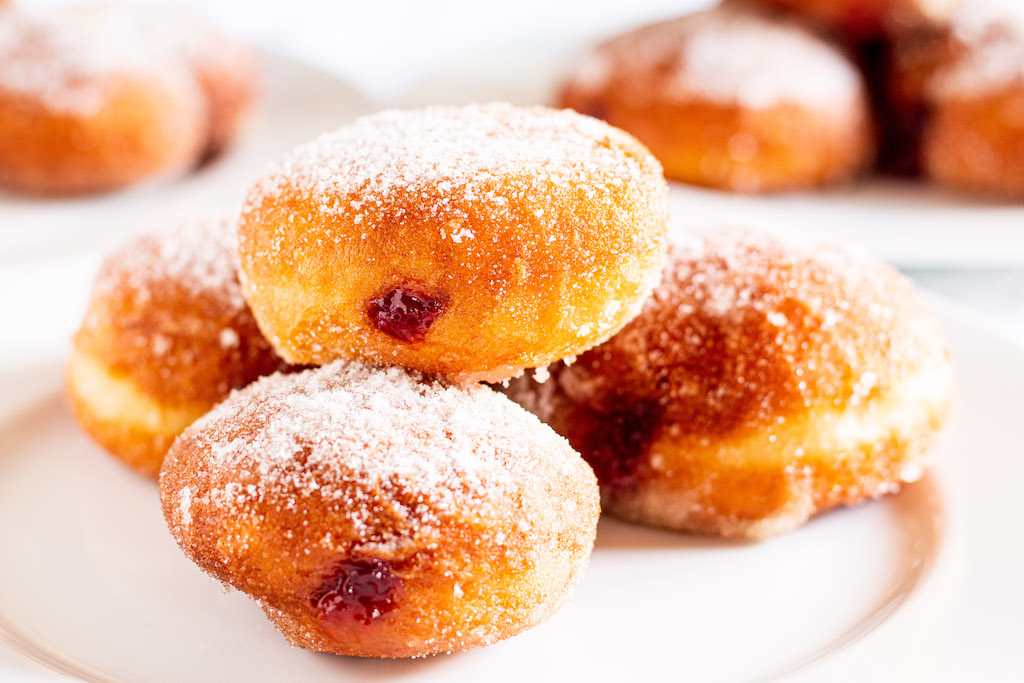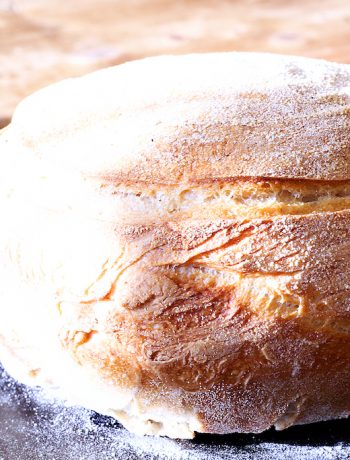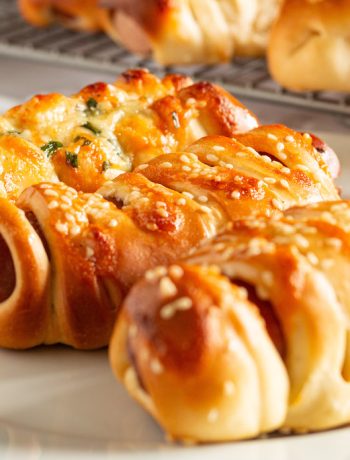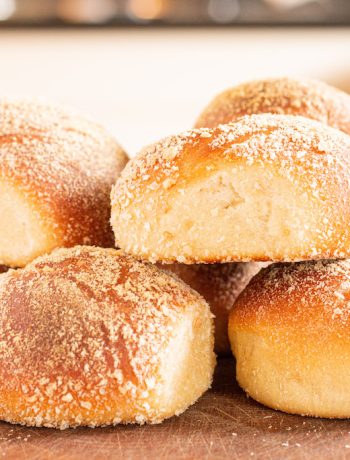Jam doughnuts are a daughter recipe of the simpler ring doughnuts. Doughnuts per se are credited to Dutch pilgrims who took their ‘olykoek’ (oily cakes) to their settlement at New Amsterdam (now known as New York due a hugely mis-judged Anglo-Dutch land swap involving nutmeg).
Making doughnuts in a ring shape makes a lot of sense because it improves the overall cooking of the centre without over-cooking the outer. This method is claimed by American ship’s cook Hanson Gregory in 1847 who was said to be fed up with the uncooked, doughy centres of the traditional olykoek. He punched the middle out using a tin pepper box, and made the first rings.
Another popular solution to this technical cooking problem was to fill the centre of the doughnut with another, pre-cooked material like meat or mushrooms. This is where the idea of filling a doughnut seems to come from. Specifically, Hanson Gregory’s mother put nuts in the centre of her olykoeks, and this may have given rise to the term ‘doughnuts.’
The classic filling for doughnuts these days is jam. Jam doughnuts taste very, very good, and this means that almost every Westernised country in the world makes them. In turn, every country has their own name for them, and this makes it very hard to find out where jam doughnuts came from.
The most compelling origin theory is that jam doughnuts are German. The Germans call doughnuts ‘krapfen.’ This terms runs the gamut from rings to filled, and has a possible origin as far back as 1485 in a book called Kuchenmeisterei that records ‘gefüllte krapfen‘ as bread-based jam sandwich deep-fried in lard.
In Germany, the term ‘krapfen‘ is still used, but the word ‘Berliner‘ is reserved for jam-filled doughnuts. The story goes that in 1756 a starry-eyed, patriotic Berliner wanted to join the Prussian army to go and crack heads around 18th Century Europe. Unfortunately, he was unfit for service, so the army employed him as a regimental baker. He made jam-filled doughnuts over an open fire, and the soldiers named them after him – ‘Berliners.’
By the time the 19th Century came around, Berliners were also known as ‘Bismarcks‘ after Chancellor Otto von Bismarck. Large areas of the USA, including Massachusetts also call jam doughnuts ‘Bismarcks.’

Other countries variously call them:
- Israel: sufganiyot
- Poland: paczki
- Manitoba: jam busters (classy)
- France: boule de Berlin
- Russia: pyshki
- UK: jam doughnuts
Jam doughnuts are not hard to make but there are some pointers we can give you. Firstly, you will have greater success with a proper deep fat fryer and a 60ml medical syringe. Secondly, the dough spends the first part of its proving as an impossible, sticky, shaggy mess. This means that it is easier to mix and knead the fresh dough with a stand mixer than it is to do it by hand. The countertop kneading is best done with an oiled dough cutter or table scraper. You can use your hands once you are past the first full prove.
Jam doughnuts
Ingredients
- 1 tbsp yeast
- A bowl with a good load of caster sugar in it
- 150ml milk, warmed
- 225g plain flour, plus extra for dusting
- Quarter tsp salt
- 50g butter, melted
- 1 egg, beaten
- Jam
Instructions
Mix the yeast with half a teaspoon of the sugar and two tablespoons of the warm milk. Place in a warm place to rest for 15 minutes, or until frothy.
Sift the flour and salt into a large bowl or stand mixer. Stir in one tablespoon of the sugar.
Make a well in the flour and pour in the yeast mix, the rest of the milk, the melted butter and the egg. Mix to make a dough and then knead (you can use a mixer for this), cover the bowl and leave to stand for 10 mins – the dough will be very sticky at this point (this is normal). Once 10 mins is up, turn the dough out onto an oiled surface and knead unit it with an oiled dough cutter until it becomes springy. Place the dough in an oiled bowl, cover and leave to prove for about 1 hour until doubled in size.
On a floured work surface, knead the dough for five minutes. By this time, it will be a lot more manageable. Divide the dough into 12 balls and place in a warm place for 30 minutes, or until they have doubled in size.
Heat a fryer to 190˚C
Gently lower the dough balls one at a time into the hot oil, in batches of two or three, and fry for 1–2 minutes or until golden-brown, and then carefully turn over and fry again until the other half is golden brown too. Remove from the hot oil with a slotted spoon and drain on kitchen paper.
Roll the hot doughnuts in the remaining sugar and allow to cool on a wire rack. Make a hole in the doughnuts with a knitting needle and wiggle the needle to create a little interior space in the doughnut. Use a 60ml syringe to inject each doughnut with jam, carefully filling to the opening of the hole while withdrawing the syringe.








No Comments